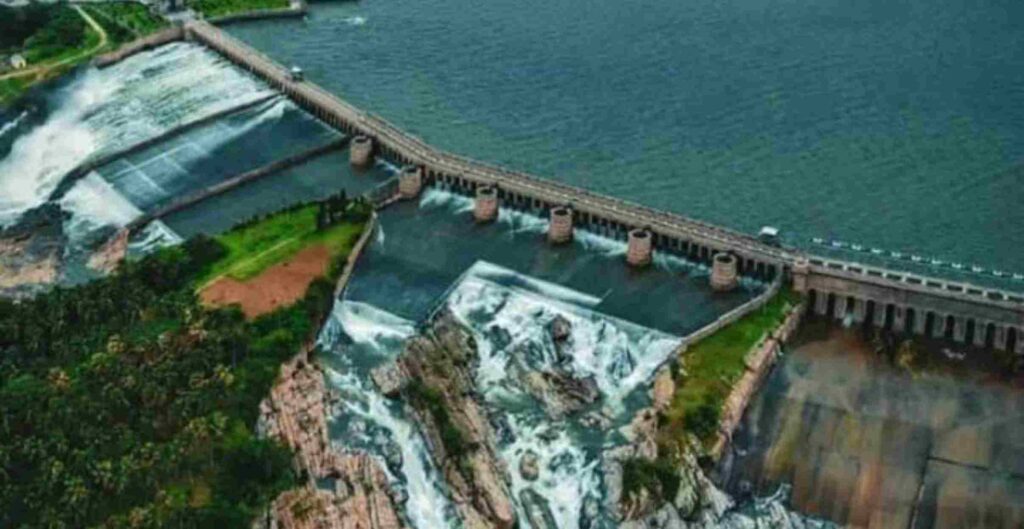
Representative Image
Karnataka reservoirs see rise in water levels
Bengaluru
As the southwest monsoon slowly gains momentum over Karnataka, the state’s major reservoirs have begun showing signs of gradual replenishment. However, the overall storage levels across the state’s critical water bodies remain below the expected mark for this time of year, raising cautious hopes for farmers, hydropower units, and drinking water supply managers alike.
According to the latest data from the Karnataka State Natural Disaster Monitoring Centre (KSNDMC), the total storage across 14 major reservoirs in the state stands at 349.01 TMC as of June 15, 2025. This figure, while significantly higher than the 187.46 TMC recorded on the same date in 2024, still represents only about 39 percent of the total designed capacity of 895.62 TMC.
In the Krishna basin — which houses some of Karnataka’s largest dams — the picture is mixed. The Almatti reservoir, a lifeline for the northern districts and an important hydel power source, has seen substantial inflows, with 23,230 cusecs flowing in. Despite this, its present storage stands at 64.03 TMC, which is just about 52 percent of its full capacity of 123.08 TMC. The neighbouring Narayanapura reservoir paints a more reassuring picture, holding 27.25 TMC, translating to 82 percent capacity utilization. Yet, other Krishna basin reservoirs are far from satisfactory — Tungabhadra, for instance, is languishing at only 25 percent of its capacity, holding a mere 26.87 TMC against its total capacity of 105.79 TMC, despite a steady inflow of 8,776 cusecs. Similarly, Ghataprabha and Malaprabha reservoirs are struggling, filled to only 22 percent and 28 percent of their capacities, respectively.
The situation in the Cauvery basin is relatively better but still leaves room for concern. The iconic Krishnaraja Sagar (KRS) reservoir near Mysuru, critical for both irrigation and drinking water supply to Bengaluru and surrounding districts, currently holds 30.84 TMC, which amounts to about 62 percent of its storage capacity. The Kabini reservoir near H D Kote has performed better, standing at 77 percent capacity with 15.02 TMC in storage — a hopeful sign for the summer water needs of Mysuru and parts of Tamil Nadu. Harangi and Hemavathi reservoirs, which also serve agricultural regions in the state’s south, are holding 6.30 TMC (74 percent) and 24.91 TMC (67 percent) respectively — indicating moderate improvement compared to last year.
In coastal and Malnad regions, which rely heavily on hydel projects, the storage condition reflects the slow onset of the monsoon. The Linganamakki reservoir, one of the state’s largest for hydropower generation, has filled only to 21 percent of its capacity, holding 31.85 TMC of water, despite receiving inflows of 10,991 cusecs. The Supa dam shows a slightly better performance, filled to 25 percent capacity with 36.90 TMC stored. Meanwhile, Varahi, another key reservoir for hydel power, holds 8.34 TMC, which is around 27 percent of its total capacity.
In the central parts of Karnataka, the Bhadra reservoir in the Malnad belt reports storage of 29.90 TMC or 42 percent of capacity, a comfortable improvement over last year’s 15.05 TMC at this time. However, all eyes are on this catchment area for further rainfall to boost storage.
Interestingly, the Vani Vilas Sagar reservoir, primarily used for drinking water and minor irrigation, is one of the few reservoirs showing a high storage percentage — 83 percent full, with 25.28 TMC in storage, indicating satisfactory inflows in its command region.
The KSNDMC report highlights that the state has cumulatively received 64.6 TMC of inflows since June 1, with total outflows standing at 30 TMC during the same period. This reflects decent water movement into the system but underscores the importance of sustained rainfall over the coming weeks to fully secure the state’s irrigation and drinking water demands.
For More Karnataka Development here
Donate for fearless journalism

